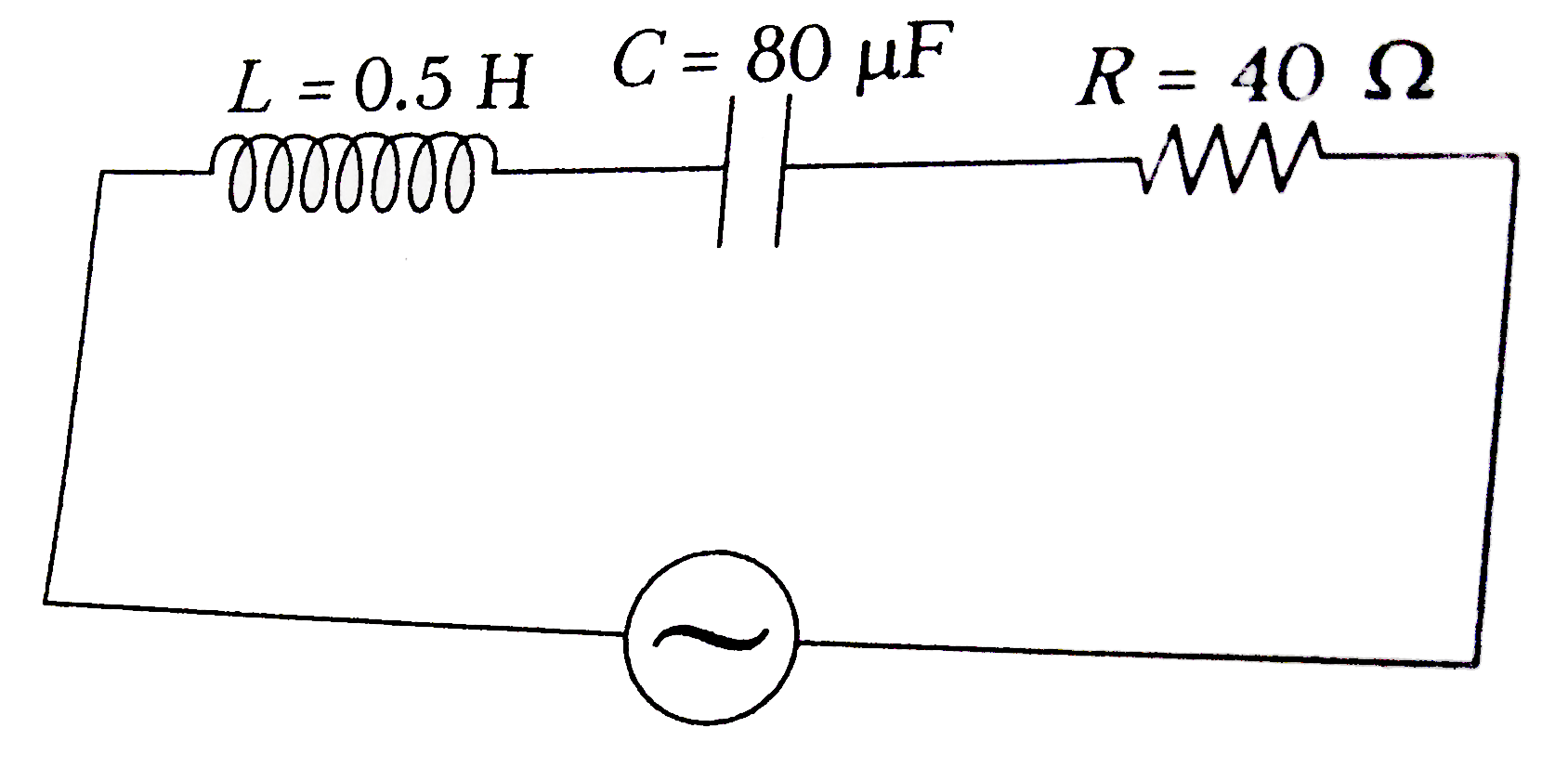A variable frequency AC source is connected to a capacitor. How will the displacement current change with decrease in frequency?
The correct Answer is:A, C, D
To solve the question of how the displacement current changes with a decrease in frequency when a variable frequency AC source is connected to a capacitor, we can follow these steps:
Step 1: Understand the Concept of Displacement Current
Displacement current is a concept introduced by James Clerk Maxwell to account for changing electric fields in situations where there is no actual current flow, such as in a capacitor. The displacement current ID can be expressed in terms of the voltage across the capacitor and the capacitive reactance.
Step 2: Write the Formula for Displacement Current
The displacement current ID can be related to the root mean square (RMS) current IRMS through the following equation:
IRMS=ID=VRMSXc
where VRMS is the RMS voltage across the capacitor and Xc is the capacitive reactance.
Step 3: Express Capacitive Reactance
The capacitive reactance Xc is given by:
Xc=1ωC
where ω=2πf (angular frequency) and C is the capacitance of the capacitor.
Step 4: Analyze the Effect of Frequency on Reactance
As the frequency f decreases, the angular frequency ω also decreases. Since Xc is inversely proportional to ω, we can conclude that:
- If ω decreases, then Xc increases.
Step 5: Relate Changes in Reactance to Displacement Current
Since ID is inversely proportional to Xc, if Xc increases, then ID must decrease. Therefore, we can summarize:
- As the frequency decreases, the displacement current ID decreases.
Final Conclusion
Thus, the displacement current will decrease with a decrease in frequency.
---
Displacement current is a concept introduced by James Clerk Maxwell to account for changing electric fields in situations where there is no actual current flow, such as in a capacitor. The displacement current ID can be expressed in terms of the voltage across the capacitor and the capacitive reactance.
The displacement current ID can be related to the root mean square (RMS) current IRMS through the following equation:
IRMS=ID=VRMSXc
where VRMS is the RMS voltage across the capacitor and Xc is the capacitive reactance.
The capacitive reactance Xc is given by:
Xc=1ωC
where ω=2πf (angular frequency) and C is the capacitance of the capacitor.
As the frequency f decreases, the angular frequency ω also decreases. Since Xc is inversely proportional to ω, we can conclude that:
- If ω decreases, then Xc increases.
Since ID is inversely proportional to Xc, if Xc increases, then ID must decrease. Therefore, we can summarize:
- As the frequency decreases, the displacement current ID decreases.
Thus, the displacement current will decrease with a decrease in frequency.
Topper's Solved these Questions
- ELECTROMAGNETIC WAVESBOOK - DC PANDEY ENGLISHCHAPTER - ELECTROMAGNETIC WAVESEXERCISE - Examples
14 Videos
- ELECTROMAGNETIC WAVESBOOK - DC PANDEY ENGLISHCHAPTER - ELECTROMAGNETIC WAVESEXERCISE - Check point 8.1
10 Videos
- ELECTROMAGNETIC WAVESBOOK - DC PANDEY ENGLISHCHAPTER - ELECTROMAGNETIC WAVESEXERCISE - Exercise More Than One Correct
4 Videos
- ELECTROMAGNETIC INDUCTIONBOOK - DC PANDEY ENGLISHCHAPTER - ELECTROMAGNETIC INDUCTIONEXERCISE - Medical entrances gallery
25 Videos
- ELECTROSTATIC POTENTIAL AND CAPACITORSBOOK - DC PANDEY ENGLISHCHAPTER - ELECTROSTATIC POTENTIAL AND CAPACITORSEXERCISE - (C) Chapter exercises
50 Videos
Similar Questions
Knowledge Check
If a variable frequency ac source is connected to a capacitor then with decrease in frequency the displacement current will
AincreaseBdecreaseCremains constantDfirst decrease then increase
When an AC source is connected to a capacitor there is a steady-state current in the circuit. Does it mean that the charges jump from one plate to the other to complete the circuit?
View SolutionAn AC source is connected to a capacitor. The current in the current is I. Now a dielectric slab is inserted into the capacitor , then the new current is
View SolutionIn the given figure , a series L-C-R circuit is connected to a variable frequency source of 230 V . The impedance and amplitude of the current at the resonating frequency will be

View SolutionAn AC source of variable frequency f is connected to an LCR series circuit. Which one of the graphs in figure represents the variation of current of current I in the circuit with frequecy f?
View SolutionAn a.c. source of angular frequency ω is fed across a resistor R and a capacitor C in series. The current registered is I. If now the frequency of the source is changed to ω/3 (but maintaining the same voltage), the current in the circuit is found to be halved. calculate the ratio of reactance to resistance at the original frequency ω.
View SolutionA box P and a coil Q are connected in series with an AC source of variable frequency.The EMF of source is constant at 10V.Box P contains a capacitance of 1μF in series with a resistance of 32Ω.Coil Q has a self inductance 4.9mH and a resistance of 68Ω.The frequency is adjusted so that the maximum current flows in P and Q.Find the impedance of P and Q at this frequency.Also find the voltage across P and Q respectively.
View SolutionAn AC voltage source is applied across an R-C circuit. Angular frequency of the source is ω, resistance is R and capacitance is C. The current registered is I. If now the frequency of source is changed to ω2 (but maintaining the same voltage), the current in the circuit is found to be two third. calculate the ratio of reactance to resistance at the original frequency ω .
View Solution
